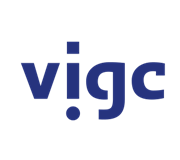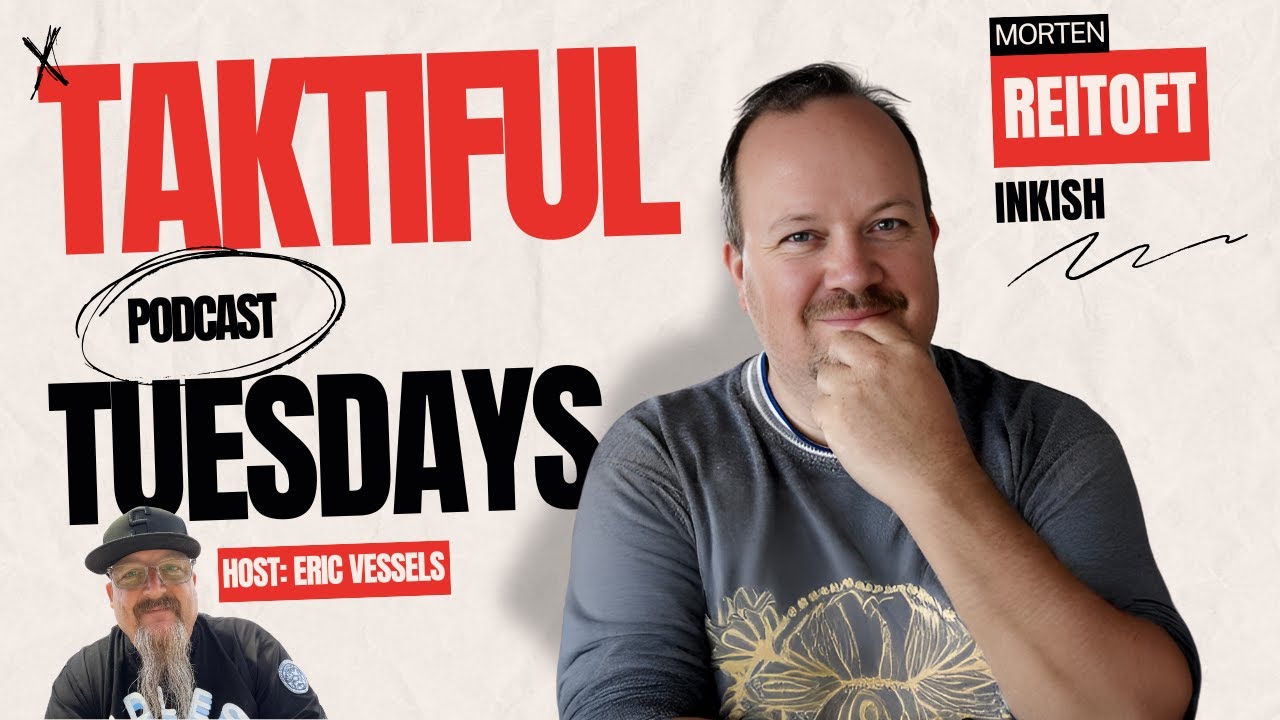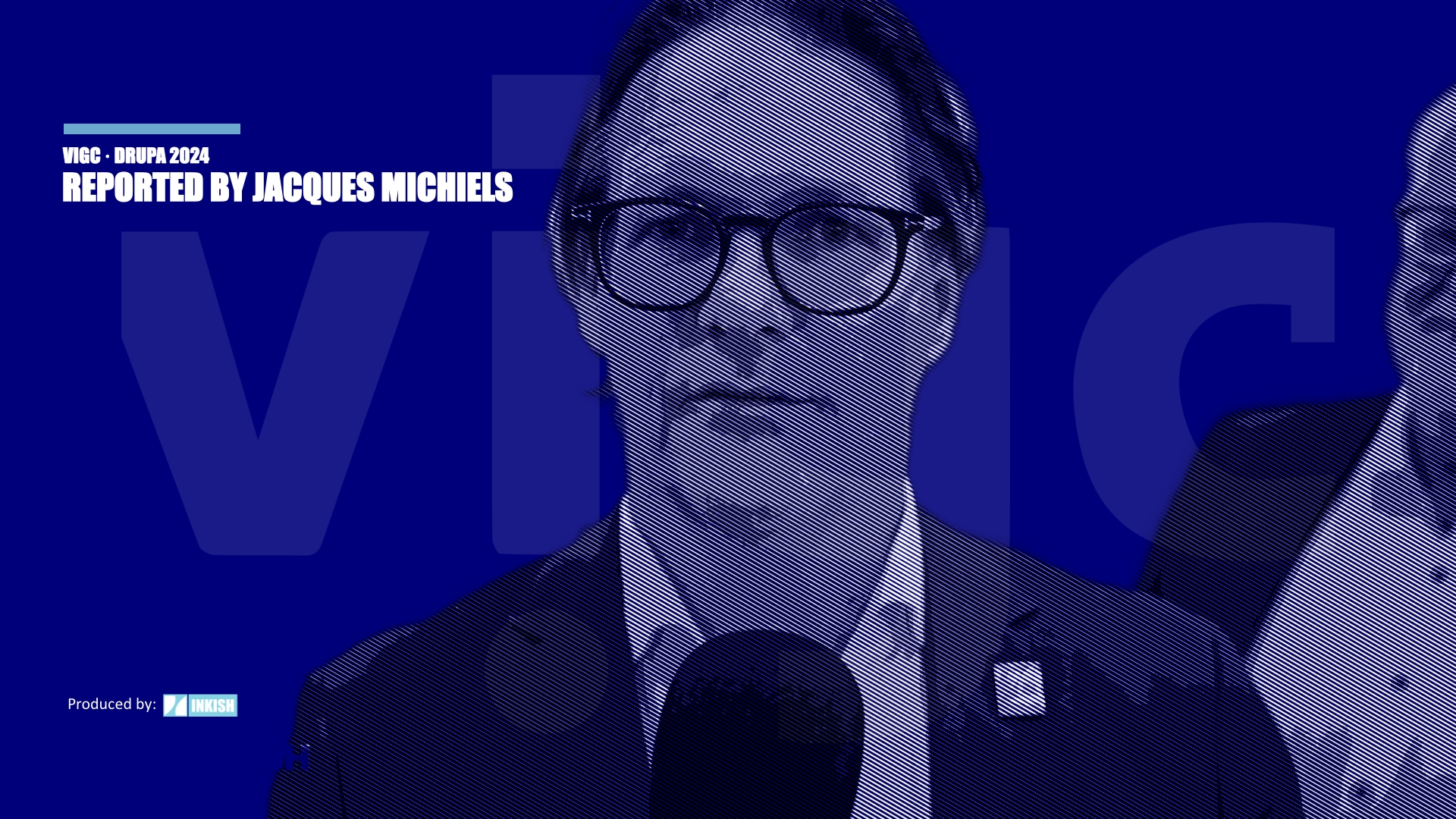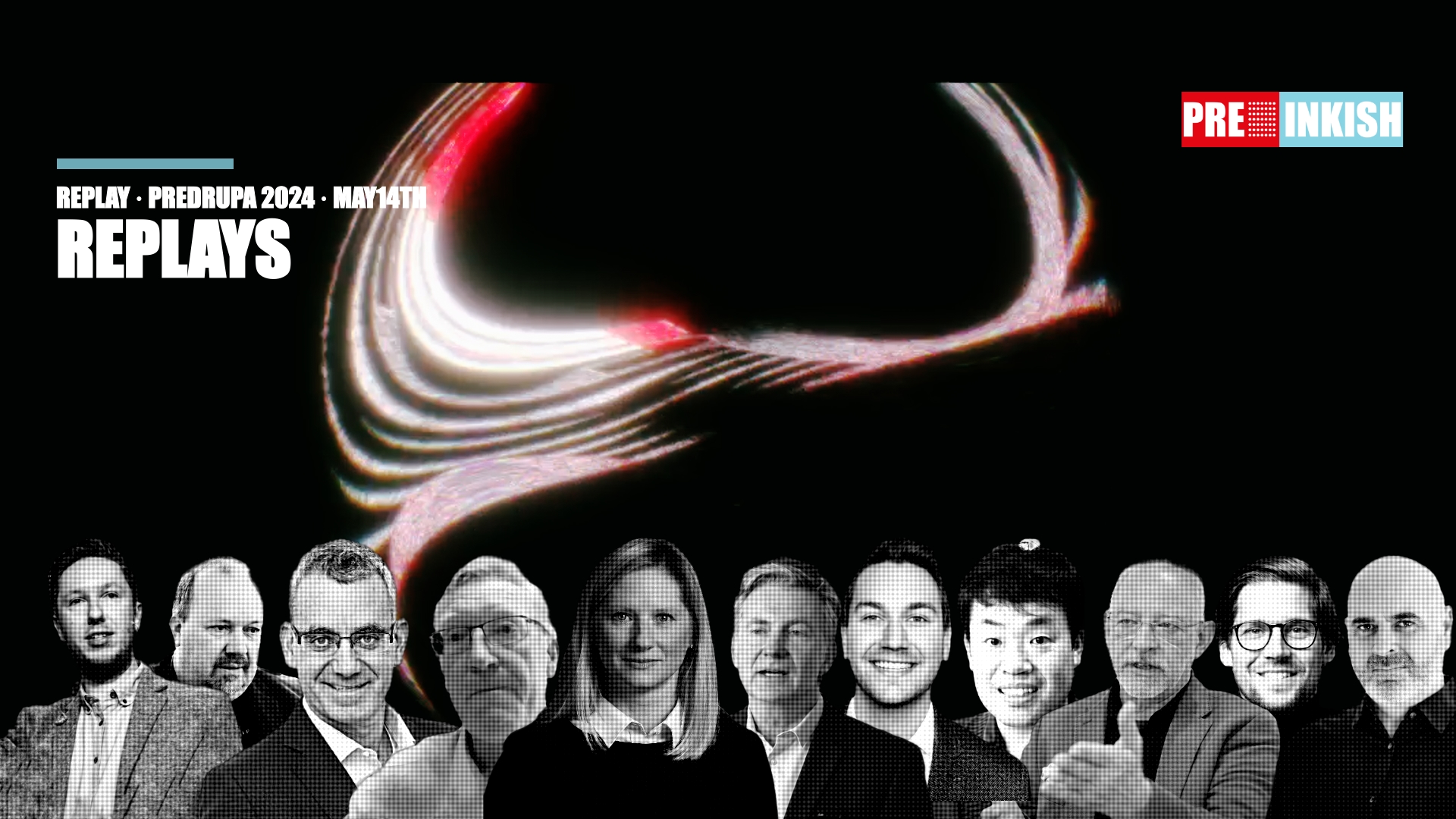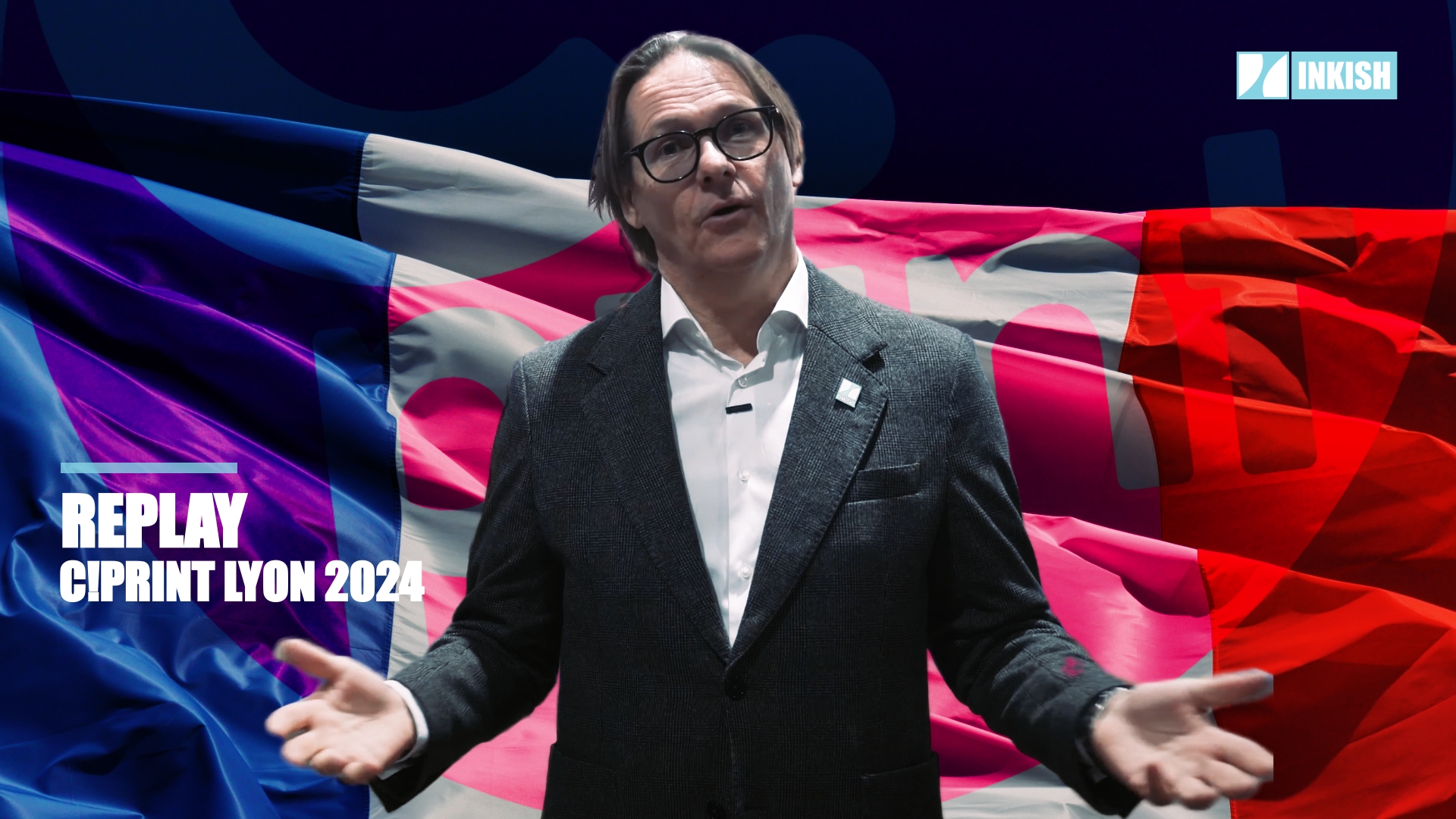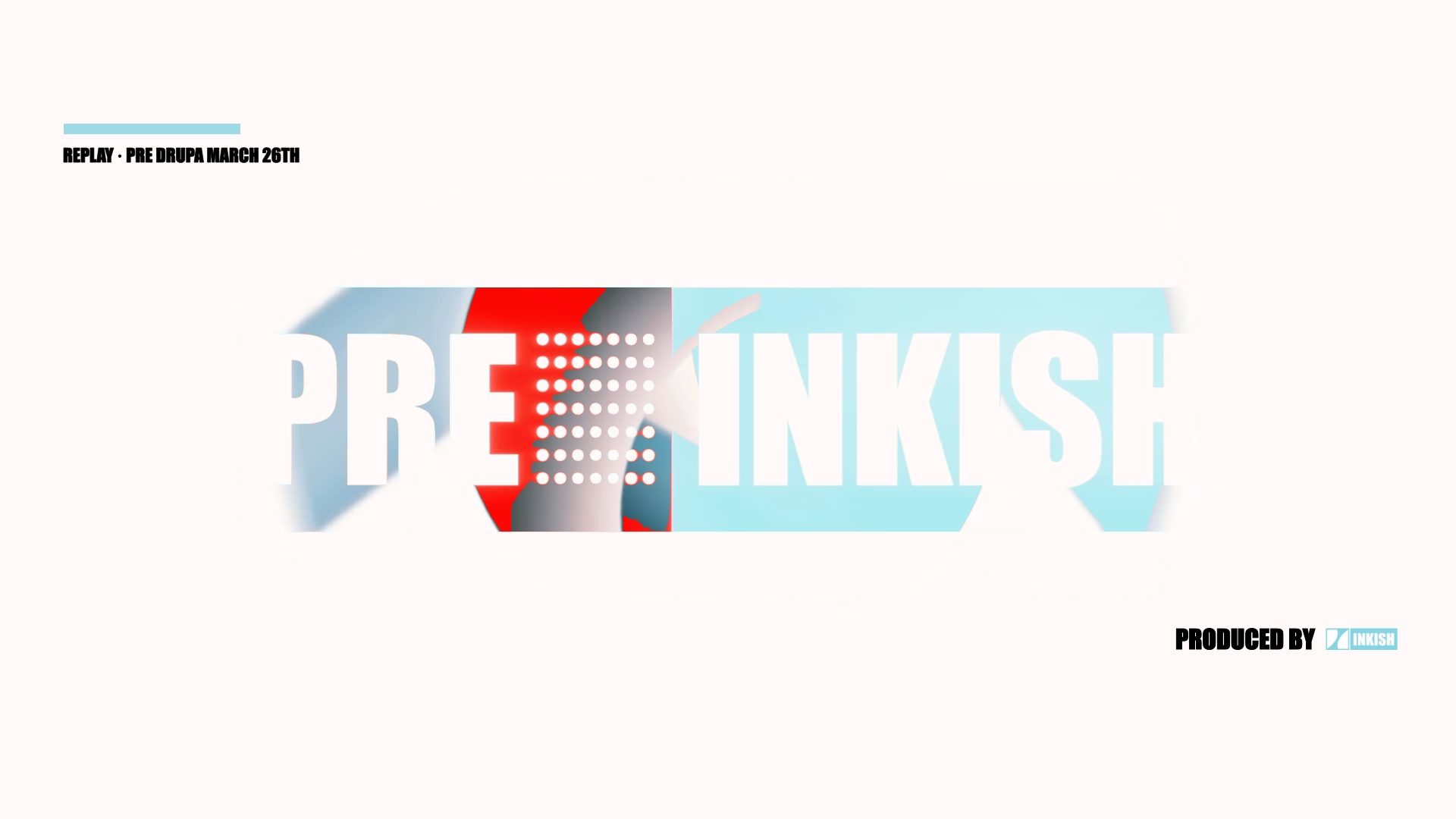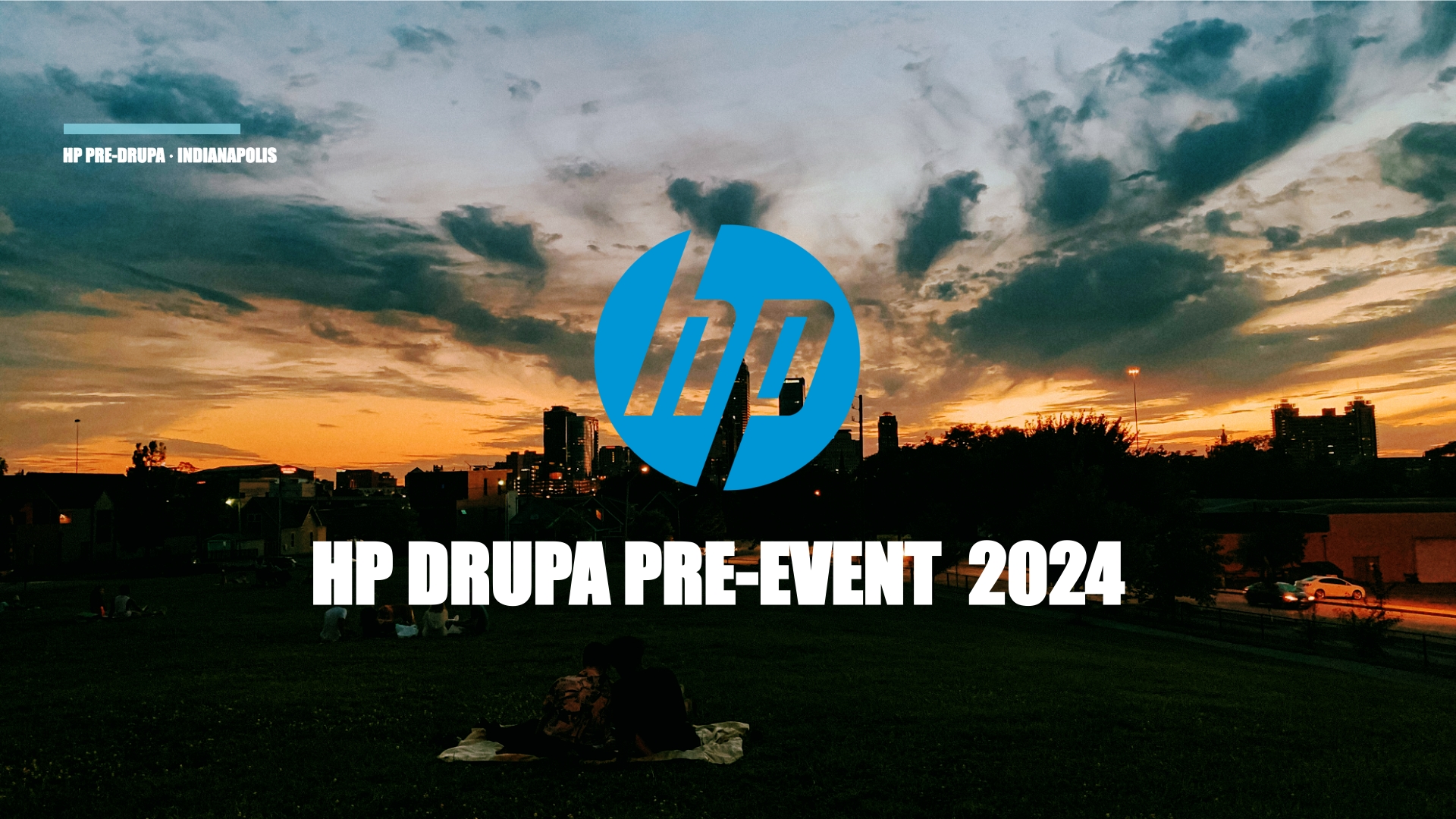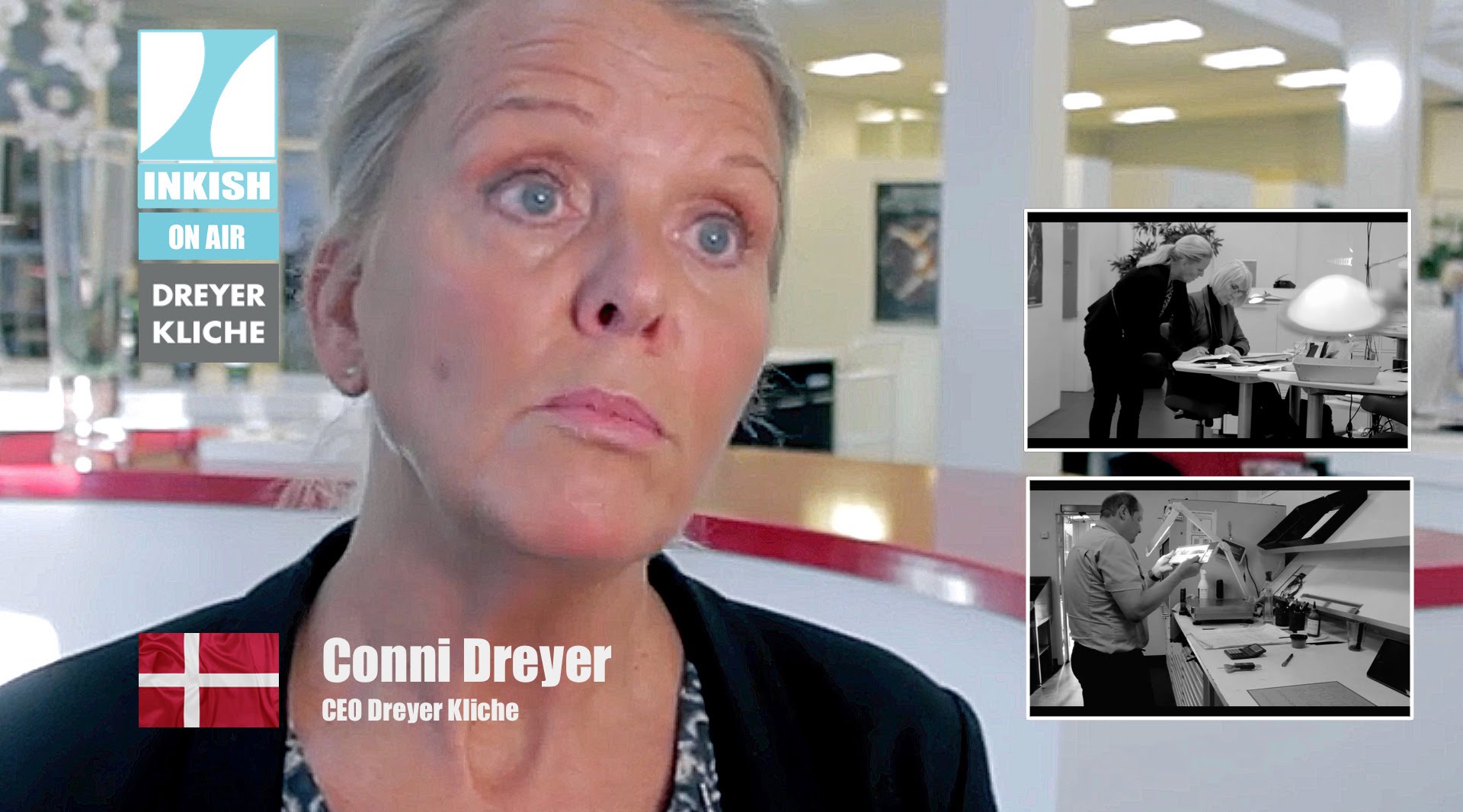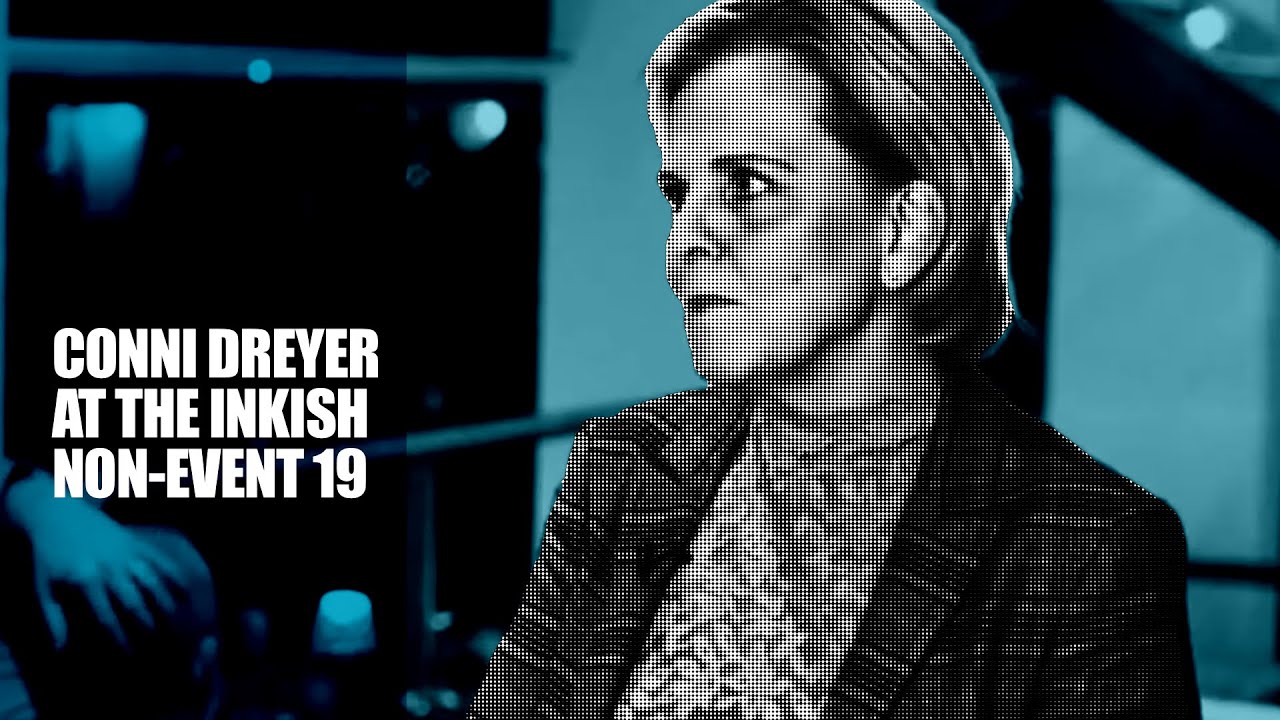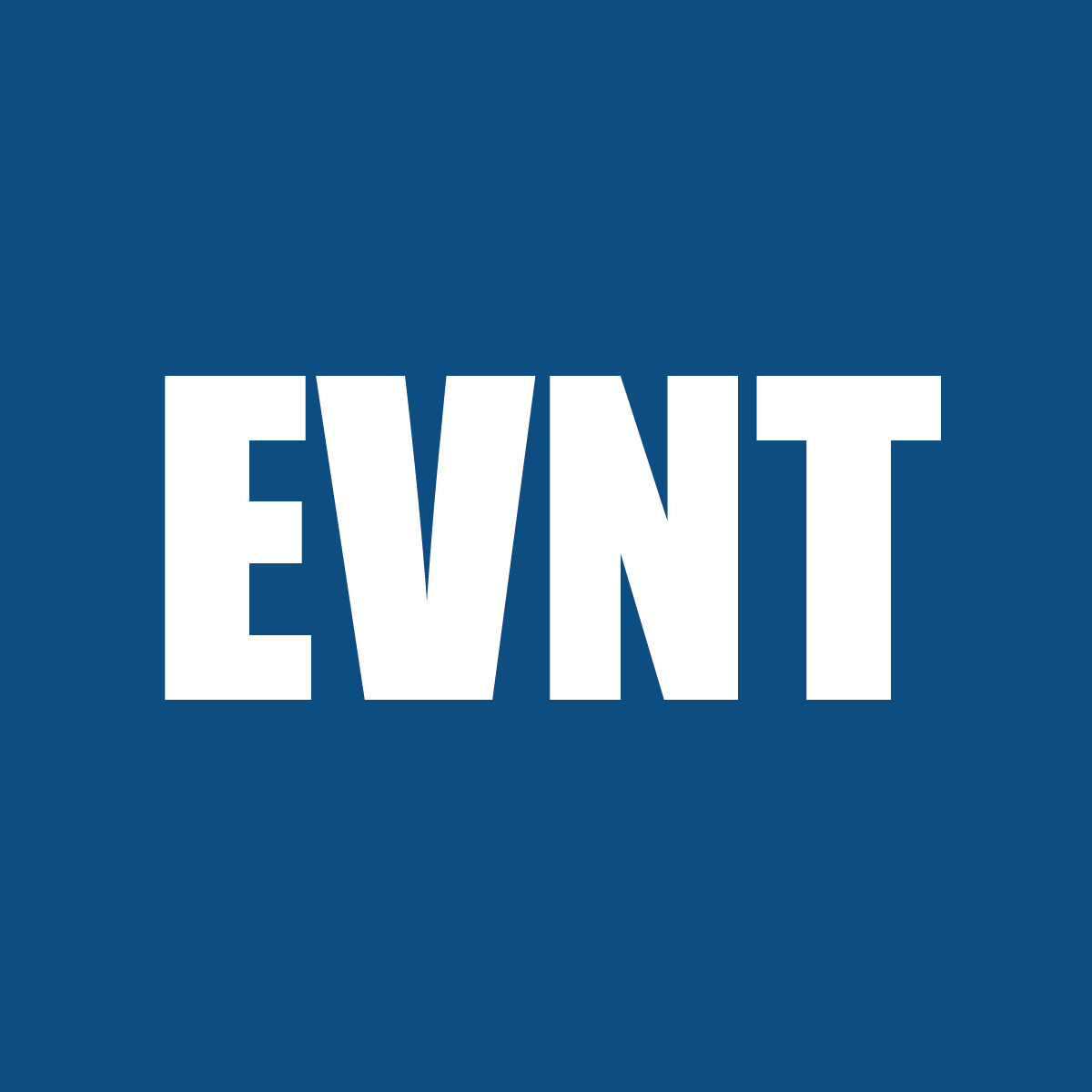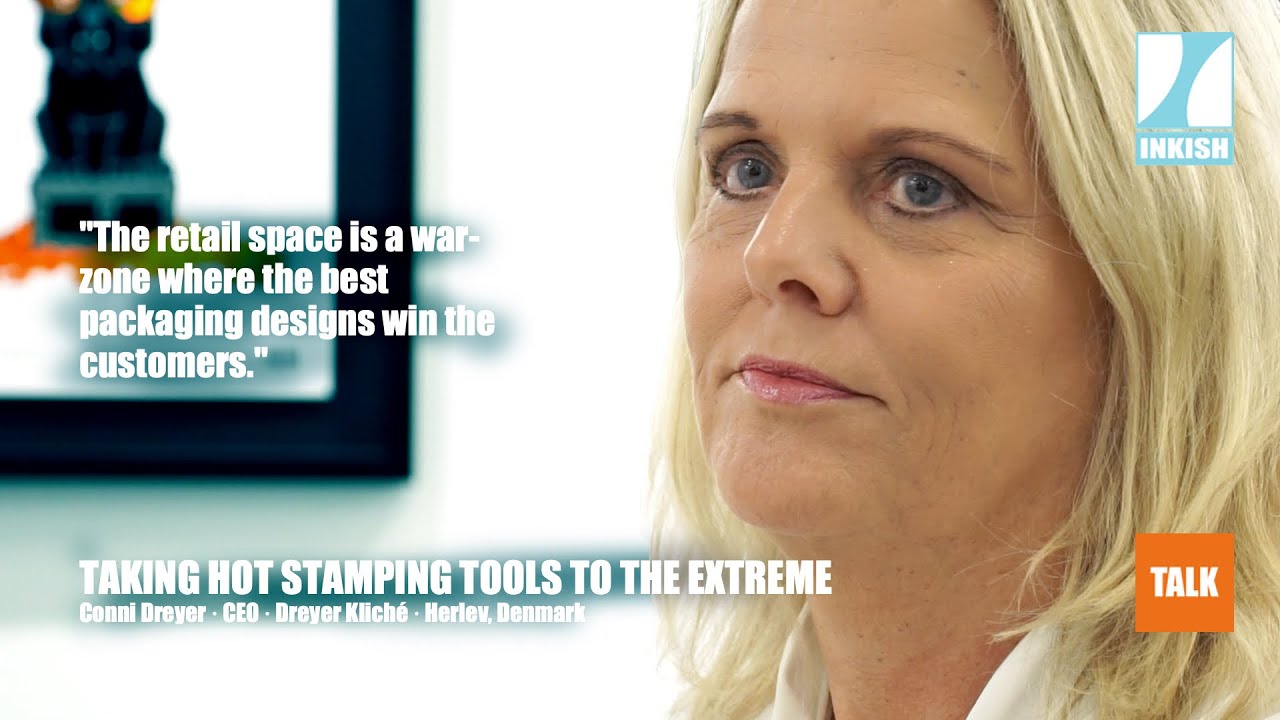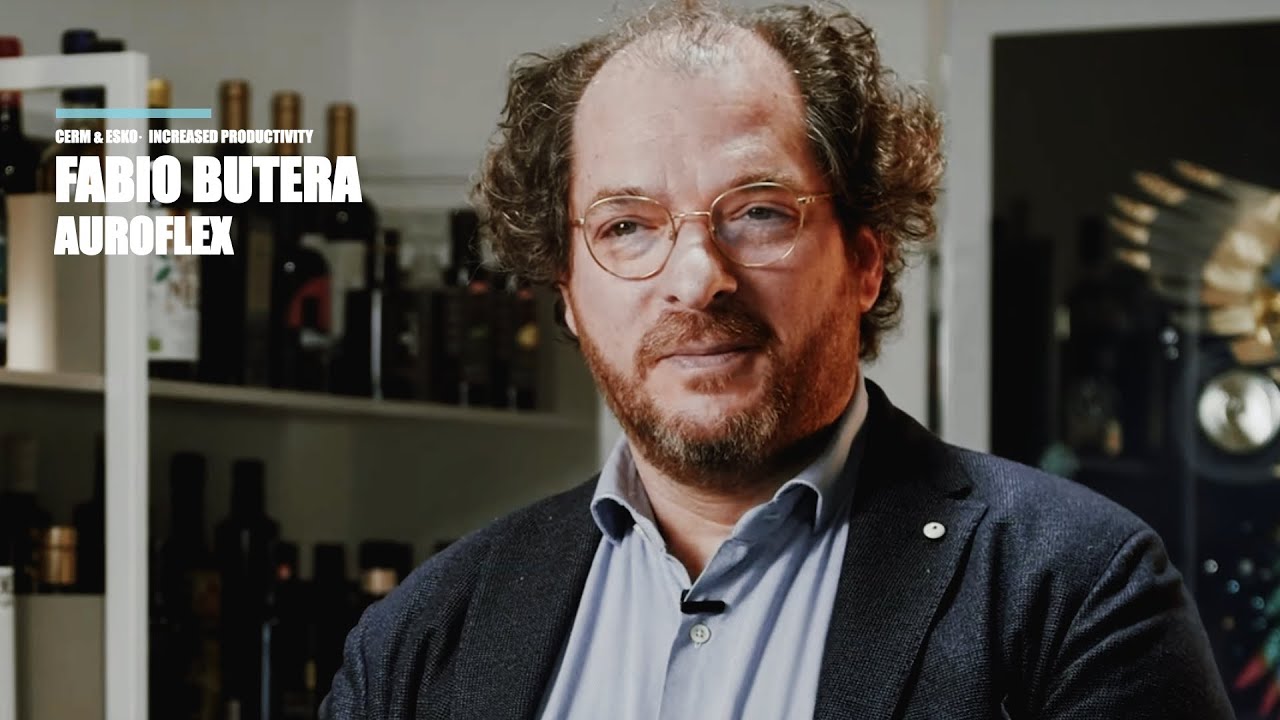INKISH.TV proudly presents: Dreyer Kliche
Dreyer Kliche produce dies for sublime quality embossing, debossing, foils etc. A couple of weeks ago we paid a visit to this amazing supplier, who decided to become an international player less than ten years ago, and today rated as one of the best suppliers in EU for this type of products. See the story and get some great insights.
I would say, one of the most important things that I have experienced over the years in this business is that – don’t let anyone turn you down! Believe in yourself, believe in your product and make sure that you are proud of what you are showing.
I would say that we are not aiming to win a gold medal. When we have received bronze and silver medals, it’s a result of what we have produced for our own marketing purposes. We have a lot of exhibitions around Europe, where we bring these things to try and show the visitors at our stand, what is possible to achieve with our tools and with the foil – that can be packaging, that can be magazine, that can be posters, that could be all products. And when we win a silver or a bronze medal, we haven’t won any gold yet, for us it’s an acknowledgment of what we are doing and that we are going in the right direction.
The most exciting things about my job is mostly I think, to create, to see what creative things can do to products, to see how they can move things, in a direction that we would like it to move together with our customers. Absolutely! What I find very interesting is also how you can change very ordinary things to be very specialized things, just with small details included into your design. Every one of us has many hats on – we can’t say that one is only doing sales and the other one is only doing production. We have the idea that the many hats you can have on, the better, because when you are only 10 people in the company, it’s very important that no matter what, you are able to run the company job and the customer job that comes in every day, so the one that can raise an order, can also do the DTP, and can also help in the production if that’s necessary. So for us, it’s very important that we have many skills in each and every one of us.
My day is typical – talking to customers, trying to find out together with the staff, the direction we want to go marketing-wise for the coming year, trying to come up with new, innovative ideas, visit different exhibitions, pick out stuff that I find interesting and how can we convert that into our industry, could we maybe take a little bit here and a little bit there, and do something totally new that hasn’t been seen before, because that’s the only way we can survive. That’s to come up with new, innovative things in this industry.
We are doing a lot of export and I’m mostly in contact with French, German, Portuguese, Italian customers and we’re doing a little bit of export to many places in Europe. I speak French, German and English and understand the Scandinavian countries, as well.
In the last 3,4 years we have had a lot of exhibitions around Europe.
And there we meet a lot of customers. The customers we have we’ve been dealing with for many years and it also goes mouth-to-mouth.
And that’s the best recommendation you can get.
So, if customers know us in advance, they recommend us to other customers.
We meet a lot of designers and customers, printers, end-users.
We have a lot of contacts all over Europe, and we do a lot of travelling. We are going directly to our customers and visit them.
So, they know who we are.
The most important thing is actually to show them what we can do and show them new ideas and opportunities with the dies that we have, because there are so many different opportunities that a customer doesn’t know about, so that’s why we are out there trying to explain it to them. We feel it’s very important once in a while to really sit there, meeting each other, looking each other into the eyes and talk to them, because then you know if some cooperation set should be arranged, then we can do that. It’s much easier to be there, but of course, it’s a lot of work, it’s a lot of traveling, because in Europe we have customers all over the place. So, it is a lot of work and a lot of traveling, but it’s also a very nice challenge and it’s very exciting to visit the customers and see what they can do. Often, it is a cooperation between the customer and us, to find out new solutions, where we can use the dies, with foil and in cooperation with the paper. Because it’s the 3 things that goes together – it’s the die, it’s the paper and foiling. It really works together and then, it’s very important that we meet the customer, to see what they are doing and try to help them to expand and to do better.
This feather here was produced for our exhibition in Monaco, at ‘LuxePack’, to show how big dies we can do – we can actually do very big dies, but also again to do something very outstanding, something different. And what I have experienced down there was that many of the visitors actually asked if they could buy this one, because they considered this as art and they would like to display it at home. No, unfortunately you can’t, but that might be the next business we should consider. This is a result of this multilevel die, with the counterforce. It’s a very beautiful feather, quite like this poster over here, with all the letters that was produced to show all the different effects that you can achieve; each and every letter here is with different foil and different effects. This “zipper” in the “Y” – that’s two foils and the zipper is embossed, so it looks like a real zipper, but again just to inspire the creative people, so they can see what they can achieve.
What I have here is actually a calendar produced out from what we call a ‘Pocket Die’, and a Pocket Die is a die where we have different possibilities. It has base plates as you can see, with a lot of screw holes and then you can mount whatever you want to mount that fits the image you have. For instance, you can see that all the dies here are the embossed dies. On this “E”, you can see that there is some embossing, that was foil first, but we need to be sure that the embossing is 100% in line with the foiled issue here. So, we have mounted the embossed die in exactly the same drill holes, as the foil die was. All the “Y” here is the background embossed as you see here. So, what you actually can do is – you can mount the foiling first for one color, so you have all the orange ones first, mounted into your base plate, run it as a foil die, take the other color, run that, take all your embossers, place them in the same position as you have your foil and then you have a perfect match with the embossing, so you will never have anything out of registration. That will minimize the printer’s ‘MakeReady’ time to a minimum, whereas in the past they’ve spent a lot of time by having registering. With this special base plate, they can have a minimum of registration time and a perfect match.
My name is Nilson. I’m a CNC Programmer in Dreyer Kliche and I take care of the CNC machine, basically CNC room. I’ve been working here since 2008, almost a 7 years now. My education is a Mechanical Technician, and also an Engineer Technician for the CNC machines, drawing all the mechanical background in AutoCad. On a typical day, we are doing mostly programming and the machining, as an engraving.
A non-typical day could be a day where we have supplied customers with some dies that were very urgent and we have a customer on the phone saying: “Your dies don’t work. What do we do?”. And we always know that things work, because we always take a proof here internally in the house before it goes out, so that can be many other factors as a reason for why it doesn’t work. That’s a case where that is upside-down instead of down and upside, because you really need to find a way to help the customer and that could be long distance. So, that’s with FaceTime or Skype, so we can show what can you do or ask the customer: “Where do you see the problem? Have you tried to do this? Have you tried to do that?”, but that would make your day very different than what you have planned from the morning.
Now we start engraving. With our capacity we go really fast, because our machine can go up to 60,000 RPMs, which is very, very high speed. We’ve just got a brand new machine and new investment, 3 or 4 months ago. Difference between these machines is that we have a capacity of running a big size of the dies, which is 1000×70 cm. It’s a big machine. The capacity of the spin is 60,000 RPM, so we can use a very small tool to give a very nice details for the engraving. To give you a rough 300×300, it’s going to take 2 hours to engrave it, which is really fast.
He wanted to retire and just close the company. I said: “No, don’t close the company. I have a background from the advertising agency, maybe I could do something different. So, I took it over, 22, 23 years ago and turned it into what it is today. I was starting with just being myself. He educated me on how to etch the die, how to develop the film and all that very old, traditional and I would say that has given me a background, so I know what I’m doing and I know the core business down to every corner and that has been very helpful for me. Our core business is what we call ‘Cliches’ or dies. It’s a tool for hot foiling and embossing and it’s primarily for the finishers in the print finishing industry. We supply hot foils in partnership with “Foilco” from England, where we are an agent for them. We have seminars, workshops and the design part where we help out with advertising agencies designers, even the end-users. The last one is that we have the technical help on the spot – we go out to the companies if they have the problem in the production and try to source it and help them out.
In that one here, you’ll find various materials with our finishing that could be packaging with foil and embossing, it could be just sheets with different embossing, it could be our micro-structure texture, blind embossing, but what you’ll find is that the first one is always that special “D” here. This A4 sheet here tells almost everything you can do with a tool. This one is one and the same tool, as you can see here on this table, and that is produced in one pass in the machine, where you can achieve stamped flat foil, you can have texture, you can have embossing, you can have a lot of different effects in one pass in the machine by having a special die to do that one. So, what you’ll have in the Cliche is actually what you will see in your print. We have all these different structures in our library, we have around 300-500 in the library, but we have a catalog with different structures that you can use if you want to. You just refer to the numbers you have on the structure card saying: “I would like to incorporate structure number DK123”. In that area we do that and we produce a die with that structure.
Our latest innovative thing is our espialle dies. It’s a die like this, where we have two images in ‘One-Two’, and when you flip with that, the different images appear. That die here is a very good alternative to a hologram. A hologram foil is very expensive, as well as the artwork for that, plus you have to have a minimum quantity of foil with a hologram foil. Here you can go in and you can do your own images and we imply them into the Cliche and here you can then have low-security hologram thing. It’s like a security thing. We have various samples of all these effects – it could be on labels, it could be on packaging, it could be on your identity cards that we have also supplied you with, so that’s just to tell you that are some of the things that we give to the designers. And how should they know that this is possible if we don’t do samples – they will never know. That’s why we do so many samples to show what we can do.
You have to think a little bit about the material. It’s a key point for us to know what materials are we working with. If I may say, that’s one of the big issues to always know before starting out a project with a customer, what kind of material, where we can go, how far can we go, how much we can emboss or deboss. So, that’s one of the things that we have to know about the quality.
Designers and graphic people mainly don’t have the experience in this field. Everyone is more than welcome to call us and we will be happy to help them.
Our main product is of course the dies, but the die has to work with the material, so that’s where we are really putting a lot of effort into. We have a lot of regular customers coming here to us, but for me and my colleagues, our primary job is of course, to get new customers in – the 50% that we are talking about is newbies every day and the other 50% is our regular customers, where they send us in jobs, where we can go through and see what’s interesting, what the issues are and if we can obtain anything better for them, or if it’s the job that could just go directly to the production. The biggest challenge in my job is of course to create or obtain more newbies, because it’s always a matter of trust where you put your new work, so it’s a matter of getting our new customers to feel welcomed here with us and acknowledge and to know that we really are handling the things and their jobs. We are quite quick and efficient, and we have a rate where we are almost second-to-none with mistakes, so we really try to do the utmost to the high quality, both in the dies and delivery time and the service that we are giving.
If it’s our hot foiling dies, or our Cliches, they need to have the hot foiling machine, and not all printer houses have that – that’s primarily the big printer houses, where they have many different processes, or it’s a print finisher, where they take jobs in from other printer houses and do the foiling, the embossing, the lamination, the UV, whatever. So, that’s mainly big printer houses, book binders, or finishers. Old-school printer houses are not used to use our product and can find it very difficult. You can get a better result if you are willing to try and switch to a newer method of doing the things. If you don’t do that, you will never get the most out of the tool or the foiling process. So, it’s very important that you are open-minded and that you want to try something new to get the most out of it.
Everyone that walks and passes here can see here if there are any orders coming through. We have a policy saying – orders have to be acknowledged within maximum two hours. That could be an order, that could be a quote and the customer is sitting in the other end, waiting for either a price or an acknowledgment of that we have received the order. We raise the order here, we have the DTP that prepares all the artwork and then they can actually see here on the screen when we have developed the film. We still use the old-fashioned film here to produce some of our products. So, that’s an ongoing screen wall, if you can say so.
With each and every job there is like a quality note following the job. From the very first hand, touching the order from the customer, you need to tell with your signature that you are the one who raised the order, so we can constantly follow each and every step that has to be approved by the person that is doing the job. So, when we have prepared the file in the DTP, they will sign saying: “I did the file here”, and another one will approve what has been done is correct. So, when we have raised an order, we can say immediately if it’s an order that goes to one department or to the other department. As you can see here, this order is black, so we all in the house know that this is the magnesium order. Then we have our gray boxes, for our brass orders. And then we have the last one – this is an urgent one, so if anything is very urgent, it goes to a red box.
There is one staff member doing the film work, and another one will check that the film is okay, before it goes out to production, and after the Cliche is actually produced, it will be checked before it goes to the dispatch department. It has four checkpoints, so that we are sure as we can be that the quality is in line with what we expect and what the customer expects.
We’ve had a job where it wasn’t good enough to tell the customer that the end-result wouldn’t be good. Because I know that when we get an order in, normally it’s the customer that decides what he wants on his job, but I also believe that we need to be so professional, so we can tell the customer if we think it’s not going to work. We’ve had a job for a pocket book with Donald Duck – it was a front cover where they wanted multilevel embossing. It was a very, very nice embossing that worked perfectly when it was blind, but it was very colorful, a 4-color and when they did the multilevel embossing on that cover, you couldn’t see any embossing, because it was so colorful that it killed the embossing totally. So, they had spent a lot of money and time to do this and produce it in that printer house and it turned out to be so disappointing. We should have seen that. We do a lot of advisoring, because we see that as a very important issue, and again that’s also a thing that takes away the focus off constantly discussing price. It’s more important that the tools work when it comes down to production, than to gain a 5% discount.
I did that in combination with the crisis we saw in 2008. As we all know, the graphic industry in Denmark, suffered very hard during the crisis. So, whereas maybe in the past, we had maybe 5 different companies to sell dies to, then there was only one. And I could see that if we wanted to survive this, we needed to look outside Denmark, so that’s where I began very concentrated and started to get customers outside of our country.
I think it’s important to know where you come from and it’s also important that our customers know that. We all know that cultures are different and that could be an issue in some cases. For instance, as you can imagine in the Arab countries, I can’t just go down there as you see me now, with my hair like this – I need to be more covered, but again I think it’s important that you know where you are coming from and that you are proud of that. And we are proud of being from Denmark, we are proud of our country, we are proud of our designs and we think we have something to offer that others maybe don’t have.
I would say, if you take the time to service your customers like we do, they will more or less always have a success themselves in the other end and I think that’s important. I think the reason why you see a customer constantly coming back and buying again and again, is because they have experienced the service, they have experienced the quality and they know that we will help them.
Today, business is going very good. We are so lucky that we see an increase in the market at bigger demand on these special products where we supply the dies and the foils to. We have a saying that goes: “Untouched is untold”, and we do what we can do with our products to make sure that all products will be touched, so thereby also be sold. You can really increase your sales by using these special effects.
We have a leading star here in the company saying that we should be among the 5 biggest in the Europe, in the next 5 years. I am quite sure we will get there if we just stick to the rule to what we have planned, constantly have high level of quality and service, and constantly look what can we do to push boundaries to come up with something new.
What have I learned? I would say one of the most important things that I have experienced over the years in this business is that – don’t let anyone turn you down! Believe in yourself, believe in your product and make sure that you are proud of what you are showing. If you are proud of yourself, the customer will also be proud of the end result they get. And don’t be afraid of going to new market – it can be very scary to start opening doors in foreign countries, but do it and be sure that what you know can be beneficial for the guides that you go into, so I would say – stick to your product, be good at what you are doing and constantly try to push boundaries! Never stop, constantly let the train drive and go with it. If you stop doing creative stuff, stop doing new, innovative things, not trying to push yourself and the boundaries – you die.


